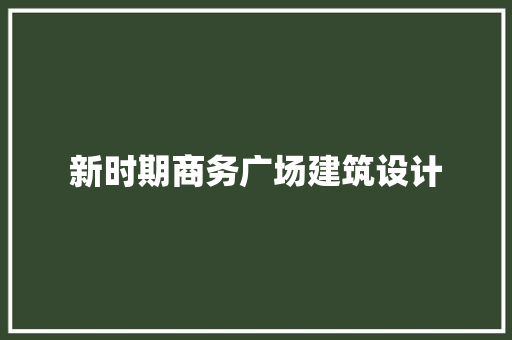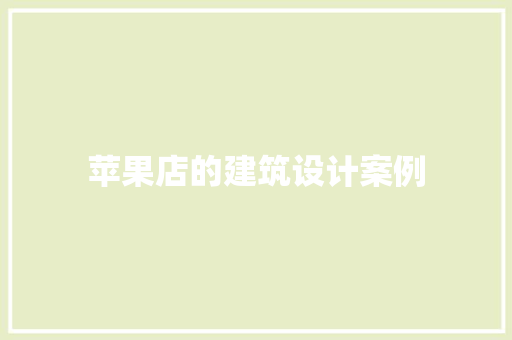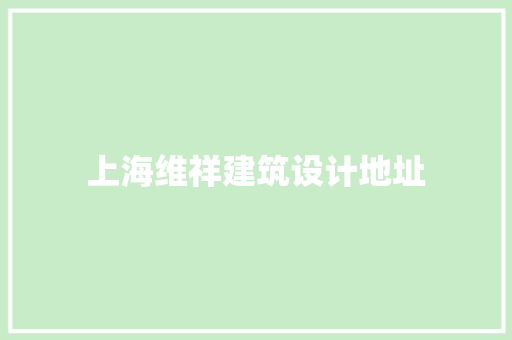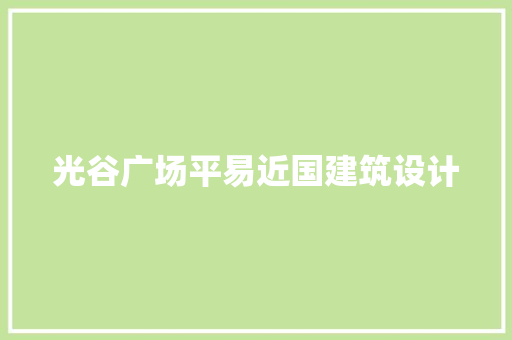“一个历史的场所,一个未来的场所”
“A place of history – a place for the future”

沈阳红梅味精厂始建于上世纪30年代末,从前味精在这里生产加工,再被分销到中国各地乃至天下各国。随着新世纪的到来,红梅企业关停,老厂区经历了短暂荒置后,沈阳万科以文创园的办法为这个经历了八十年纪月的老厂房注入了新的生命。红砖建筑经由翻修正造重新呈现于大众面前,老厂区原有的树木被尽可能地保留下来,新建筑也以一种与老建筑折衷的风格加入到园区中。
The site in Hongmei, where glutamates were produced in an industrial fermentation process, packed and shipped to the whole of China and overseas from 1939 to 2014, is being developed by VANKE China into a unique cultural quarter. Some of the impressive 20th century factory buildings will be restored, the existing vegetation preserved and new architecture in the traditional style added.
在红梅文创园的景不雅观设计过程中,我们希望园区内的历史建筑可以充当营造开放空间氛围的主要角色,而风格统一的新建筑则作为联系不同空间的补充元素。我们用当代且与建筑风格相折衷的景不雅观措辞重新整合厂区内的开放空间,创造多种多样的空间体验,以未来文创园的业主以及游客为做事主体,为其供应适宜其功能需求的园地。
We want to support this strong architectural stance with our complementary concept for the exterior spaces. The new building ensemble should form a legible and coherent spatial figure, using only a few design elements that are derived from the existing buildings. The contemporary landscape scheme provides a variety of spatial experiences, structures the site and delivers a specific range of functions for future cultural institutions and visitors to the site.
每一个紧张建筑前都设置了广场或主轴干道,作为建筑内部空间的延申,为园区中同时举办多个活动供应可能性,做事于建筑的利用者。同时老建筑也以其极具特色的历史构造,丰富着这些广场空间的氛围,让人置身个中时印象深刻乐不思蜀。
In front of each building is a square or a spacious promenade, offering space for several events to be staged, accessed and supplied simultaneously. Interior and exterior spaces are connected; all spaces are developed from and with the historical structure of the complex and thus reinforce its impact.
总平图 Master plan © LATZ+PARTNER
鸟瞰红梅文创园 Aerial view © SHENYANG VANKE
红梅便是这样在这个中国北方的当代化大都邑沈阳中,不仅为沈阳市民的文化生活供应多样的场所,也为邻里社区街坊的日常生活供应一个特殊的休闲娱乐去处。
An exceptional urban situation is being created at Hongmei, a northern metropolis with a population of millions, which will not only create a suitable space for future cultural activities, but also provide people living in the surrounding skyscrapers with a special place to spend their leisure time.
延续现有遗存,谨慎地添砖加瓦
Developing the existing fabric – with sensitive additions
砖,作为最紧张的硬质铺装贯穿园区的外部空间,不仅仅足够坚实为多种活动供应场所,从颜色以及材质上与现存的建筑呼应着,从外部空间上进一步将新老建筑领悟,将园区中的所有建构筑物连接成一个整体,同时温和地强调着红梅与周围当代街区的不同,也突出了红梅的工业历史特质。砖铺面自东往西,颜色由棕色向砖赤色不规则渐变,将城市发展的纷呈变革和历史发展的韶光印记奥妙地融为一体,彷佛也轻轻地诉说着过往,也承接着未来。
A continuous mineral surface made of brick creates a robust and versatile surfacing whose colour and texture matches the old and new materials of the buildings and emphasises a harmonious contrast to the modern environment – thus an “identification surface” is created. The colour of the brick changes from grey in the east to a light red in the west-this highlights the urban diversity within the complex and reflects the traces of time in a positive way. Any future changes in use or structural conversions will be easy to integrate.
砖铺面自东往西,颜色由棕色向砖赤色不规则渐变 The colour of the brick changes from grey in the east to a light red in the west © SHENYANG VANKE
树木,被尽可能保留下来。现存树木和新植的枫树,银杏,槐树等以其余一种形式重新塑造了空间。在开放空间中树木或阵列栽植、或自由散植,以此塑造了空间氛围并知足了园地的利用需求。
The existing maple, ginkgo and pagoda trees will be supplemented by related species and help define new spaces within the site. Some are densely planted, others free-standing specimen trees, which continue the proportions of the existing buildings and develop an attractive sequence of squares, each with its own individual design and spatial concept.
只管即便保存现有树木,营造新的景不雅观空间 The existing trees help define new spaces © SHENYANG VANKE
管道,在从前园区里穿梭于建筑之间运输着气体或液体,到了本日则运输着历史和影象。它们作为工业园区标志性的元素,同时也可以起到划分空间,营造空间氛围,乃至还可以充当园区中的导向系统。这些老厂区中管道的影象被延续到新的文创园中,更多的功能也被融入个中。管道上可以设置座椅,可以悬挂灯具和海报,也可以根据需求安装监控摄像和广播设备,将繁杂的各项设备在管道这个元素上统一起来。此外管道在新功能的领悟上还保持着很高的灵巧性,可以根据业主的需求与更多的设备结合到一起。
The gas mains and pipes that used to serve the industrial site are transformed into a historical feature which reinforces its spatial impact and provides orientation; they also serve as seating elements and carry integrated lighting and information elements, loudspeakers, textile banners and signs – a feature that could later be extended as required.
遗存的管道与罐 Remaining pipes and tank © LATZ+PARTNER
晶体座椅,在园区随处可见。以白色混凝土浇筑而成,拥有分明的棱角,抽象于味精晶体的形状,它是为红梅文创园特殊打造的。此外在园区的主入口处,我们还利用了同样的材料,类似的抽象措辞设计了象征味精晶体的雕塑,作为园区历史的象征,同时也是园区不可或缺的标志物之一。
The formula for commercial glutamate inspired us to use long, angular and white prism shapes for the design of our special Hongmei bench that will be installed throughout the site. This theme is also used in a symbolic form in the entrance square.
建筑与开放空间 – 形式,材料以及空间维度的共同对话
Buildings and public spaces – a family of related shapes, materials and dimensions
1,入口广场将园区从东侧向城市打开。穿过园区的老大门,经由一个宽大的坡道后呈现于面前的将是老库房以及新的设计公社,这时我们正式进入由这新老建筑所围合成的入口广场。发酵罐和管道组合而成的塑像统领着广场,晶体雕塑从发酵罐倾泻而出,它们昭示着这个老工业园区的历史。
An entrée opens out towards a large space in the east. A spacious ramp and staircase lead to a large entrance square with beautiful views of the old and new buildings at the cultural centre. A pipe sculpture alludes to the site’s industrial past, and a large ground relief hints at its former produce.
发酵罐和管道组合而成的塑像 Sculpture of tank and pipes © SHENYANG VANKE
2,设计公社办公楼前庭院里,草坪,槐树丛,晶体座椅,为人们供应着稍作勾留的契机,以及短暂休憩的空间,
An intermediate space with a usable lawn and ginkgo trees invites people to take a break and enjoy the pleasant surroundings.
楼间庭院为人们供应休憩空间 The intermediate space © SHENYANG VANKE
3,在园区的最西南角为婚礼草坪。草坪的三面由阵列的银杏林所围合,北面是经由修葺的老建筑。建筑装点着草坪,为人们展现着过目难忘的立面,也为婚礼或活动供应着舞台背景。大概在没有活动的时候,游人可以在草坪的边上,银杏林荫下,找到一处安静的角落,稍作勾留。
We designed a wedding garden in the southwest, where the restored buildings are gently framed by densely planted trees which provide a backdrop for memorable photos, and perhaps offer a moment of tranquillity and relaxation.
婚礼草坪 Wedding lawn © SHENYANG VANKE
4,园区的南面边界上为旧时供货色运输的旧铁路以及站台,如今改造成月台咖啡馆。火车头以及餐车车厢被重新搬回铁轨上,展现着过去的情景,同时也为游客供应了咖啡厅,以及非常有趣餐饮体验。
Immediately adjacent sits the former railway line and its railway station, a gastronomic highlight. Old carriages and storage sheds offer plenty of space for restaurants and a fun visit.
5,穿过入口广场,在园区中沿着中轴大道溜达,老发酵厂房,包装工厂等老建筑坐落于两旁,为人们供应着各式各样的文化活动。在主轴上人们可以更好地感想熏染到砖面由东到西的色彩渐变。
A promenade takes visitors into the centre of the complex, to the former fermentation and packaging buildings, which now accommodate diverse cultural venues. This is where the change in colour of the brick paving offers a particularly beautiful experience.
发酵艺术中央 Art center © SHENYANG VANKE
6,水景广场在园区的核心位置。广场在夏天蓄水的时候,它为孩童供应了一个空想的嬉戏场所。在水面沉着如镜面的时候,周围的老建筑,树木,艺术装置都将倒影在水里。当有活动须要在该广场上举行时或冬日,水将暂时排出,广场则真正意义上成为了可以为活动供应空间的广场。
The Small Piazzetta with its reflective water surface turns into a ‘mirror square’ in the summer months. Children are invited to play in the water and the beautiful buildings, trees and a special work of art are reflected in it. During events in the square and in winter the water is drained and room is made for funfair booths, stalls and small artistic attractions.
水景广场 Water square © SHENYANG VANKE
7,北面与中轴大道平行的是餐饮步辇儿街,在街道旁就餐或喝茶,都是不错的选择。
A gastronomy alley offers good food and beverages.
餐饮街 Gastronomy alley © SHENYANG VANKE
8,园区西北角的大广场是红梅文创园内最大的开放空间,它将为园区供应户外大型活动的举办园地。广场的南部向北倾斜放坡下沉,最低处约下沉半米,由此北面不下沉的区域则成为了相对抬高的舞台,下沉区域则是不雅观众区,在没有大型活动时,广场也可以为周边居民供应休憩,娱乐,运动等场所。舞台北面的廊架不仅扮演着舞台背景的角色,同时也围合了广场空间,使广场与北面的城市道路隔开。廊架内设有篮球场,乒乓球等运动园地,并可以供应举办小型活动的可能性,同时也不会滋扰大广场上的活动。廊架上安置了铁网,将来如果在廊架周边栽种爬藤植物,廊架将会被绿植所覆盖。在广场的西侧是砖砌的高低错落的平台,为人们供应了可以坐下安歇的空间。高低台和台上的树木以及管道一同优雅地划定了广场西侧的边界,阻隔了广场外车来车往的鼓噪,界定着广场内与外的空间。
The Great Piazza is the largest open space at Hongmei Cultural Creative Park. The ground level drops slightly to the north and creates a stage. The space is open for all people living in the neighbourhood for meetings, sports, games and unticketed events. Presentations, concerts and theatre plays will also be staged there. Shallow seating steps define the edge of the space in the west trees form a buffer to the surrounding urban area and, together with the pipe system, enclose the piazza with an elegant frame.
To the north, a spatial sculpture made of steel sections continues the industrial architecture and creates a perfect space for ball games, including basketball, streetball, table tennis, etc., and for smaller events. Nets enclose the area and will soon be covered by the lush growth of climbing plants and create a pleasant environment. They also buffer the Great Piazza from traffic noise on the busy streets around the site. Here, too, pipes surround the space and embed this important recreational area within the new cultural centre.
培植中的旧厂房风格廊架,为民众供应体育活动场所,同时是广场大型活动的背景墙 Industrial pergola under construction, which creates a perfect space for sport and is also a background for events on the the Great Piazza © SHENYANG VANKE
西入口 Western entrance © SHENYANG VANKE
结语
Conclusion
红梅文创园从现在起以至将来,将为人们供应一个繁华都邑中分歧凡响的文化活动空间。景不雅观与建筑相互映衬,相互领悟,用历史打造一个崭新的未来。
Hongmei Cultural Creative Park is a unique cultural quarter for both citizens and tourists in this diverse city. Landscape architecture and architecture work together as a unit and thus furnish this former industrial city with attractive prospects for the future.
项目名称:万科红梅文化创意家当园景不雅观方案设计
项目地点:中国沈阳
项目面积:6.2公顷
设计公司:拉茨与合资人景不雅观方案事务所
主创设计:Tilman Latz
设计团队:Ulf Glaenzer, 麦瀚, 谢维肖, Jan Vrabec, Ana Rodriguez-Wiggin, Franziska Brand
客户/开拓商:沈阳万科企业有限公司
互助方(建筑单位、施工单位等):沈阳绿野建筑景不雅观环境设计有限公司
完成年份:2019









